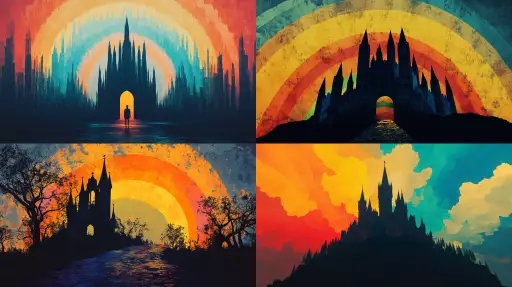Explore the Best AI Image Gallery

Beyond the Brushstrokes: How Edge Computing Fuels Creative Innovation
The creative landscape is undergoing a seismic shift, propelled by the rise of edge computing. This technology, which processes data closer to its source rather than relying on centralized cloud servers, is empowering artists, designers, and innovators with unprecedented capabilities. From immersive augmented reality experiences to real-time collaborative workflows, edge computing is blurring the lines between imagination and reality.
Redefining Artistic Expression
Edge computings low latency and high bandwidth enable a new breed of interactive and responsive art forms. Imagine sculptures that react to viewer movements, paintings that evolve with the surrounding environment, or musical performances that adapt in real time to audience emotions. These possibilities are no longer confined to science fiction; they are becoming tangible realities thanks to edge computings ability to process vast amounts of sensory data instantaneously.
For example, imagine a wearable device equipped with sensors that capture an artists movements and translate them into dynamic light patterns projected onto a canvas. The artwork would evolve organically as the artist moves, creating a truly immersive and collaborative experience between creator and observer. This is just one glimpse into the transformative potential of edge computing in the realm of visual arts.
Empowering Collaborative Creativity
Edge computing also has the power to revolutionize creative collaboration. Imagine a team of designers scattered across the globe, seamlessly working together on a project in real time. With edge-enabled tools, they could share their ideas, iterate on designs instantly, and bring their collective vision to life without geographical constraints.
This distributed approach fosters inclusivity and accelerates the creative process, allowing individuals with diverse skillsets and perspectives to contribute meaningfully from anywhere in the world. Edge computing breaks down barriers, fostering a more interconnected and collaborative creative ecosystem.
Navigating Ethical Considerations
As with any powerful technology, edge computing in the creative industry raises ethical considerations that demand careful attention.
- Data Privacy: Edge devices collect vast amounts of user data, raising concerns about how this information is stored, used, and protected. Transparent data policies and robust security measures are crucial to ensure user privacy and build trust.
- Algorithmic Bias: Creative AI algorithms trained on biased datasets can perpetuate existing inequalities and reinforce harmful stereotypes. Its essential to develop and deploy AI systems that are fair, inclusive, and accountable.
- Accessibility: Edge computing technologies should be accessible to all, regardless of their technical expertise or socioeconomic background. Efforts must be made to bridge the digital divide and ensure equitable access to these transformative tools.
Shaping the Future of Creativity
The convergence of edge computing and creativity holds immense promise for the future. As this technology continues to evolve, we can expect even more groundbreaking applications that push the boundaries of artistic expression, collaborative design, and immersive experiences.
Artists, designers, and innovators who embrace edge computing will be at the forefront of this creative revolution, shaping the world through innovative and impactful works.
Key Considerations for the Future
- Standardization and Interoperability: Establishing industry standards for edge computing platforms and protocols will foster collaboration and accelerate innovation within the creative ecosystem.
- Education and Training: Equipping creators with the knowledge and skills to harness the power of edge computing is crucial for widespread adoption and its full potential realization.
- Investment in Research and Development: Continued investment in research and development will be essential to unlock new frontiers in edge-powered creativity, exploring novel applications and addressing emerging challenges.
Edge computing is not merely a technological advancement; its a catalyst for a new era of creative expression. By embracing its possibilities while navigating the ethical complexities, we can unlock a future where imagination knows no bounds.



](https://images.ai-img.art/thumbnails/150/124afc0facac1c0c676099ab4d2aae88da73c9ba0b89d1f6de454d8b236458ef.webp)


